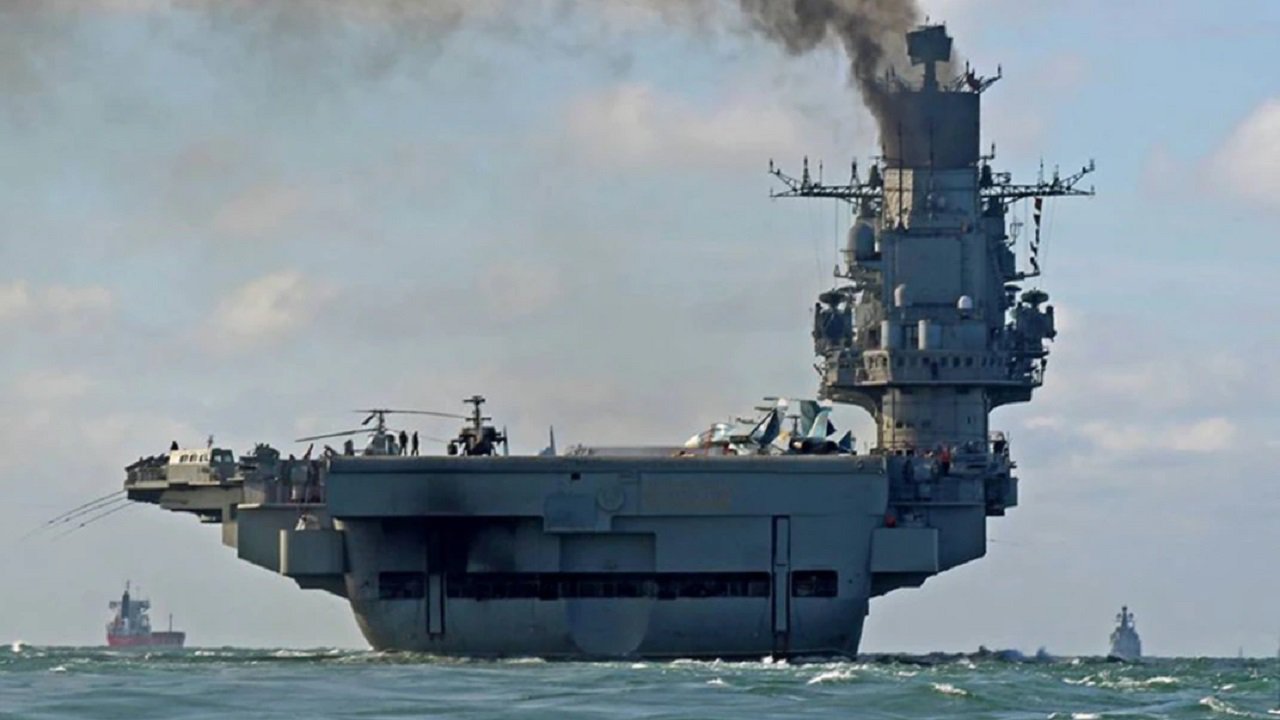Russia’s sole aircraft carrier may be the most doomed piece of military equipment ever to enter naval service.
Since its introduction in the mid 1980’s, the Admiral Kuznetsov has been plagued by a series of unfortunate events, including fires, mishaps and endless “maintenance” repairs.
Last month, Russia’s main state-news agency announced that the cursed Kuznetsov could re-enter service by the end of 2024. However, considering the carrier’s abysmal track record, this seems pretty unlikely.
Since Moscow first invaded Kyiv more than a year and a half ago, the country has suffered from debilitating economic sanctions and rapidly diminishing weapons and material stockpiles.
The Kremlin can hardly produce enough ammunition and other essential weapons including main battle tanks (MBTs) and infantry fighting vehicles to support its troops, making the notion that it could pour perhaps millions of dollars’ more into its lone aircraft carrier quite improbable.
As claimed by TASS, “According to the adjusted plan, factory sea trials of the aircraft carrier should begin in the spring of 2024,” adding that “If the tests pass without glitches, then the ship can be handed over to the fleet at the end of 2024. If something goes wrong during the tests, then a shift to 2025 is inevitable.”
A brief history of the Kuznetsov:
Russia’s oldest and singular aircraft carrier was named after revered USSR Admiral Nikolay Gerasimovich Kuznetsov and commissioned in 1985. Designed to protect the Soviet Union’s missile-carrying submarines and other ships, the Kuznetsov has been described by its Navy as a “heavy aircraft-carrying cruiser.”
A second carrier was planned after the Kuznetsov, however, following the collapse of the Soviet Union this project was derailed. Russia’s Varyag carrier was ultimately sold to China, becoming the People’s Liberation Army’s first aircraft carrier.
The hefty ship has the capacity to carry 12 Sukhoi Su-27s (nicknamed “Flanker” by NATO), 16 Yakovlev Yak 41-M (“Freestyle”) fixed-wing airframes in addition to a variety of helicopters. A Granit anti-ship missile system is fitted on the Kuznetsov and equipped with a dozen surface-to-surface missile launchers.
Nicknamed by NATO as “Shipwreck,” the Granit is believed to have a range greater than 400km and analysts infer that the weapon can carry both nuclear and conventional warheads. While the Kuznetsov’s anti-submarine/anti-torpedo capabilities are significant, the carrier’s serious design flaws perhaps outweigh these advantages.
The extremely black, tarry Mazut substance powers the Kuznetsov, allowing enemies to detect the carrier from miles away due to the fumes of black smoke that constantly engulf the ship. This shoddy construction has been amplified in recent years by a cycle of disasters that have plagued the carrier. In 2018, a crane crashed onto the Kuznetsov’s deck, causing extreme damage. One year later, at least one sailor was killed and a dozen more injured when a fire broke out on the ship.
In 2016, the carrier deployed to combat in Syria for the first time. When two airframes were lost due to faulty arresting wiring, the Kuznetsov was forced to relocate to shore.
Considering the carrier’s history and Russia’s tendency to exaggerate claims, we may not see the Kuznetsov free sailing for quite some time, if even at all.
Maya Carlin, a Senior Editor for 19FortyFive, is an analyst with the Center for Security Policy and a former Anna Sobol Levy Fellow at IDC Herzliya in Israel. She has by-lines in many publications, including The National Interest, Jerusalem Post, and Times of Israel. You can follow her on Twitter: @MayaCarlin.

